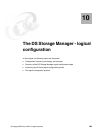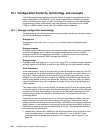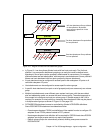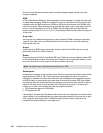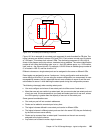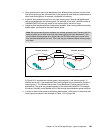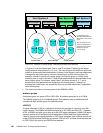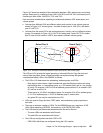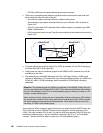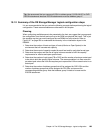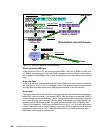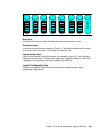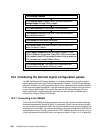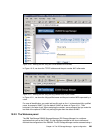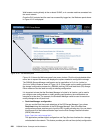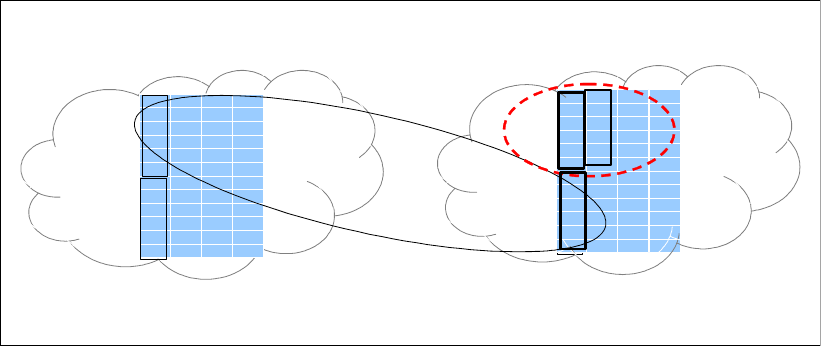
Chapter 10. The DS Storage Manager - logical configuration 197
Figure 10-5 shows an example of the relationship between LSSs, extent pools, and volume
groups: Extent pool 4, consisting of two LUNs, LUN 2210 and LUN 7401; and extent pool 5,
consisting of three LUNs, LUN 2313, 7512, and 7515.
Here are some considerations regarding the relationship between LSS, extent pools, and
volume groups:
Volumes from different LSSs and different extent pools can be in one volume group as
shown in Figure 10-5. Volume group 1 consists of extent pool 4, LUN 2210, and extent
pool 5, LUN 7512.
Volumes from the same LSS or the same extent pool, or both, can be in different volume
groups. For example in Figure 10-5, LUN 7512 in extent pool 5 and LUN 7515 in extent
pool 5, both of which reside in LSS75, also reside in different volume groups.
Figure 10-5 Example of relationship between LSSs, extent pools, and volume group
The LSS and LCU provide the logical grouping of volumes/LUNs for Copy Services and
various other purposes. Some of these purposes are explained along with general
considerations about LSSs in the DS8000, as follows:
The LSS or LCU determines the addressing, address groups, and PAVs.
– Each logical volume has a 4 digit Hexadecimal xyzz identification number built using
the following rules: x = the address group, xy = LSS number itself, and zz = the volume
id (volid). For example, LUN 2310 has an address group number of 2, is located in LSS
23, and has a volid of 10.
– There are up to 16 LSSs in an address group. For example, 00 to 0F for address group
0, 10-1F for address group 1, 20-2F for address group 2, and so forth.
– Any given PAV can only be used within one LCU.
LSSs are used for Copy Services, PPRC paths, and consistency group properties or
time-outs.
There are a maximum number of LSSs. For the DS8000 there are a maximum of 255
LSSs. When speaking of ESCON, the maximum is 16 ESCON CKD LSSs.
The LSSs have a pre-determined association with Server0 or Server1.
– The even LSSs are associated with Server0.
– The odd LSSs are associated with Server1.
The LSSs are configured to be either CKD or FB.
– CKD LSSs’ definitions are configured during the LCU creation.
2
2
1
0
7
4
0
1
Extent Pool 4 Extent Pool 5
Volume Group 1
Volume Group 2
2
3
1
3
7
5
1
2
7
5
1
5



